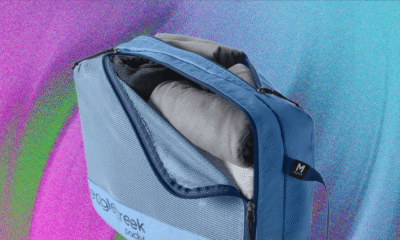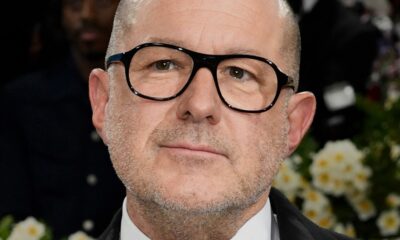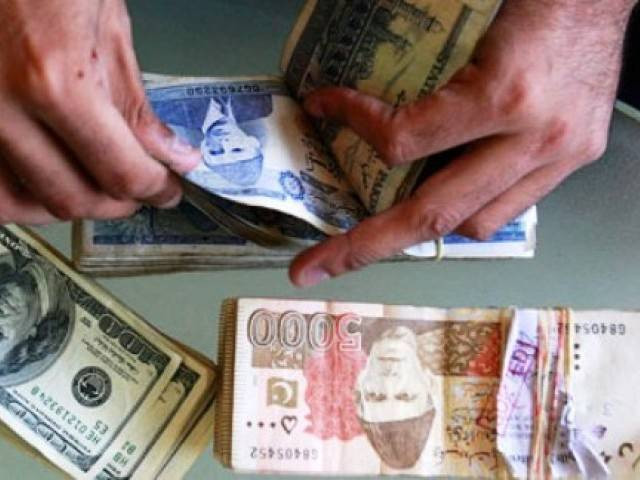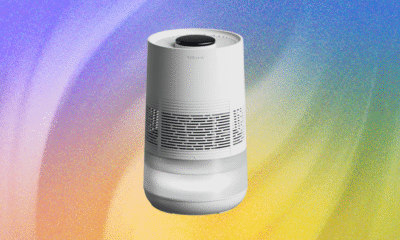Business
Nike co-founder Phil Knight to donate $2 billion to OHSU’s Knight Cancer Institute

Phil Knight
Matthew Staver | Bloomberg | Getty Images
Nike co-founder Phil Knight is donating $2 billion to the Oregon Health and Science University’s Knight Cancer Institute, the single largest donation ever to a U.S. university, college or health institution, according to the Knight Foundation.
The foundation said on Thursday the gift that will be used to shift the scientific approach to cancer treatment, research and patient care outcomes.
As part of the gift, the Knights will partner with cancer research pioneer Dr. Brian Druker.
A decade ago, Druker and OHSU took on a challenge to raise $500 million for cancer research, and the Knights signed on to match the raise dollar-for-dollar.
“We are grateful for the opportunity to invest in the next stage of the Druker-led revolutionary vision of cancer research, diagnosis, treatment, care, and some day, eradication,” Phil and Penny Knight said in a statement. “We couldn’t be more excited about the transformational potential of this work for humanity.”
Phil and Penny Knight with Dr. Brian Druker of the OHSU Knight Cancer Institute.
Courtesy of OHSU Knight Cancer Institute.
Knight’s fortune stems from his success with the swoosh, the company he founded in 1964.
Originally called Blue Ribbon Sports, the business began humbly, with Knight selling sneakers out of the trunk of his car, as he recounted in his 2016 memoir, “Shoe Dog.”
Nike went public in December 1980 and quickly became the most dominant sneaker brand, partnered with some of the top athletes across sport.
During Knight’s tenure at the public company, from its IPO to his June 2016 retirement, Nike shares soared almost 30,500%.
Although Nike stock has had a painful few years, down more than 50% from its peak in late 2021, it remains the most valuable public company in athletic footwear, valued at more than $110 billion.
The Knights are regularly found on lists of top philanthropists. In May, Time Magazine estimated their lifetime giving at $3.6 billion, including $370 million gifted in 2024 alone.
According to the Knight Foundation’s latest tax documents the foundation held more than $5 billion in assets at the end of 2023.
“I wanted to build something that was my own, something I could point to and say: I made that. It was the only way I saw to make life meaningful,” Knight said in his 2016 memoir.
Correction: The headline on this story has been updated to correct that Phil Knight is donating to Oregon Health and Science University’s Knight Cancer Institute. A previous version misstated the institution.
Business
Trade talks: India, EU wrap up 14th round of FTA negotiations; push on to seal deal by December – The Times of India

India and the 27-nation European Union (EU) have concluded the 14th round of negotiations for a proposed free trade agreement (FTA) in Brussels, as both sides look to resolve outstanding issues and move closer to signing the deal by the end of the year, PTI reported citing an official.The five-day round, which began on October 6, focused on narrowing gaps across key areas of trade in goods and services. Indian negotiators were later joined by Commerce Secretary Rajesh Agrawal in the final days to provide additional momentum to the talks.During his visit, Agrawal held discussions with Sabine Weyand, Director General for Trade at the European Commission, as both sides worked to accelerate progress on the long-pending trade pact.Commerce and Industry Minister Piyush Goyal recently said he was hopeful that the two sides would be able to sign the agreement soon. Goyal is also expected to travel to Brussels to meet his EU counterpart Maros Sefcovic for a high-level review of the progress made so far.Both India and the EU have set an ambitious target to conclude the negotiations by December, officials familiar with the matter said, PTI reported.Negotiations for a comprehensive trade pact between India and the EU were relaunched in June 2022 after a hiatus of more than eight years. The process had been suspended in 2013 due to significant differences over market access and tariff liberalisation.The EU has sought deeper tariff cuts in sectors such as automobiles and medical devices, alongside reductions in duties on products including wine, spirits, meat, and poultry. It has also pressed for a stronger intellectual property framework as part of the agreement.For India, the proposed pact holds potential to make key export categories such as ready-made garments, pharmaceuticals, steel, petroleum products, and electrical machinery more competitive in the European market.The India-EU trade pact talks span 23 policy chapters covering areas such as trade in goods and services, investment protection, sanitary and phytosanitary standards, technical barriers to trade, rules of origin, customs procedures, competition, trade defence, government procurement, dispute resolution, geographical indications, and sustainable development.India’s bilateral trade in goods with the EU stood at $136.53 billion in 2024–25, comprising exports worth $75.85 billion and imports valued at $60.68 billion — making the bloc India’s largest trading partner for goods.The EU accounts for nearly 17 per cent of India’s total exports, while India represents around 9 per cent of the bloc’s overall exports to global markets. Bilateral trade in services between the two partners was estimated at $51.45 billion in 2023.
Business
Telcos network costs rise: Gap between expenditure and revenue exceeds Rs 10,000 crore; COAI flags rising network investment burden – The Times of India

The gap between telecom operators’ network expenditure and revenue continues to widen, prompting industry body COAI to defend calls for higher mobile tariffs, citing the increasing financial burden of network deployment on service providers.Speaking at the India Mobile Congress, Cellular Operators Association of India (COAI) Director General, SP Kochhar, told PTI that while the government has provided significant support to telecom operators through policies such as the right of way (RoW), several authorities continue to levy exorbitant charges for laying network elements.“Earlier, the gap until 2024 for infrastructure development and revenue received from tariffs was around Rs 10,000 crore. Now it has started increasing even further. Our cost of rolling out networks should be reduced by a reduction in the price of spectrum, levies etc. The Centre has come out with a very good ROW policy. It is a different matter that many people have not yet fallen in line and are still charging extremely high,” Kochhar said.He also defended the recent cut in data packs for entry-level tariff plans by select operators, stressing that the move was necessary given competitive pressures.Kochhar pointed out that competition among the four telecom operators remains intense, and there has been no significant trend suggesting that consumers are shifting towards low-cost data options.“There is a need to find ways to make high network users pay more for the data. Seventy per cent of the traffic which flows on our networks is by 4 to 5 LTGs (large traffic generators like YouTube, Netflix, Facebook etc). They pay zero. Nobody will blame OTT but they will blame the network. Our demand to the government is that they [LTGs] should contribute to the development of networks,” Kochhar said.He added that the investments made by Indian telecom operators are intended for the benefit of domestic consumers and are not meant to serve as a medium for profit for international players who do not bear any cost.
Business
Indias Real Estate Equity Inflows Jump 48 Pc In Q3 2025: Report

NEW DELHI: Equity investments in India’s real estate sector jumped 48 per cent year-on-year to $3.8 billion in the July-September period (Q3), a report said on Friday. This growth in inflow was primarily fuelled by capital deployment into land or development sites and built-up office and retail assets, according to the report by real estate consulting firm CBRE South Asia.
In the first nine months of 2025, the equity investments increased by 14 per cent on-year to $10.2 billion — from $8.9 billion in the same period last year.
The report highlighted that land or development sites and built-up office and retail assets accounted for more than 90 per cent of the total capital inflows during Q3 2025.
On the category of investors, developers remained the primary drivers of capital deployment, contributing 45 per cent of the total equity inflows, followed by Institutional investors with a 33 per cent share.
CBRE reported that Mumbai attracted the highest investments at 32 per cent, followed by Pune at around 18 per cent and Bengaluru at nearly 16 per cent.
Anshuman Magazine, Chairman and CEO – India, South-East Asia, Middle East and Africa, CBRE, said that the healthy inflow of domestic capital demonstrates the sector’s resilience and depth.
“In the upcoming quarters, greenfield developments are likely to continue witnessing a robust momentum, with a healthy spread across residential, office, mixed-use, data centres, and I&L sectors,” he added.
In addition to global institutional investors, Indian sponsors accounted for a significant part of the total inflows.
“India’s ability to combine strong domestic capital with global institutional participation will remain a key differentiator in 2026 and beyond,” added Gaurav Kumar, Managing Director, Capital Markets and Land, CBRE India.
CBRE forecasts a strong finish for the investment activity in 2025, fuelled by capital deployment into built-up office and retail assets.
For the office sector, the limited availability of investible core assets for acquisition indicate that opportunistic bets are likely to continue gaining traction, the report noted.
-

 Tech6 days ago
Tech6 days agoI’ve Tested Countless Mesh Systems. Here Are the Routers I Recommend
-

 Tech1 week ago
Tech1 week agoAmazon Prime Big Deal Days Is Next Week, but We Already Found 40 Early Deals
-

 Tech1 week ago
Tech1 week agoAI in an ‘industrial bubble’ but will benefit society: Bezos
-

 Tech1 week ago
Tech1 week agoAmazon is overhauling its devices to take on Apple in the AI era
-

 Tech1 week ago
Tech1 week agoAll Hail the Surprisingly Versatile Packing Cube! These Are Our Favorites
-

 Tech6 days ago
Tech6 days agoJony Ive Says He Wants His OpenAI Devices to ‘Make Us Happy’
-

 Business7 days ago
Business7 days agoInvestors are packing up; Pakistan must ask why | The Express Tribune
-

 Tech1 week ago
Tech1 week agoCombat Dry Indoor Winter Air With a New Humidifier

















